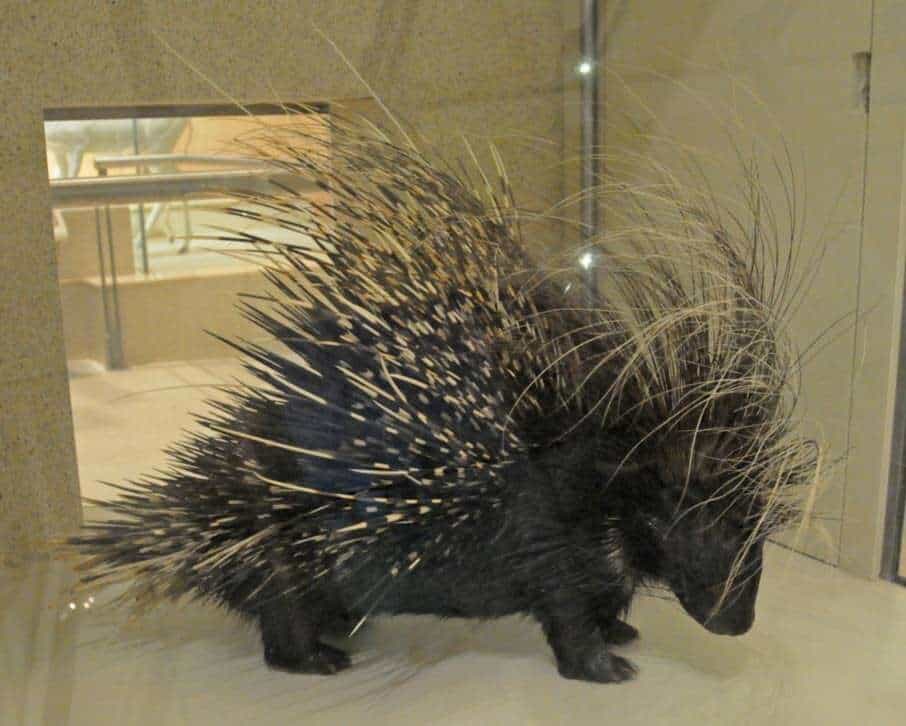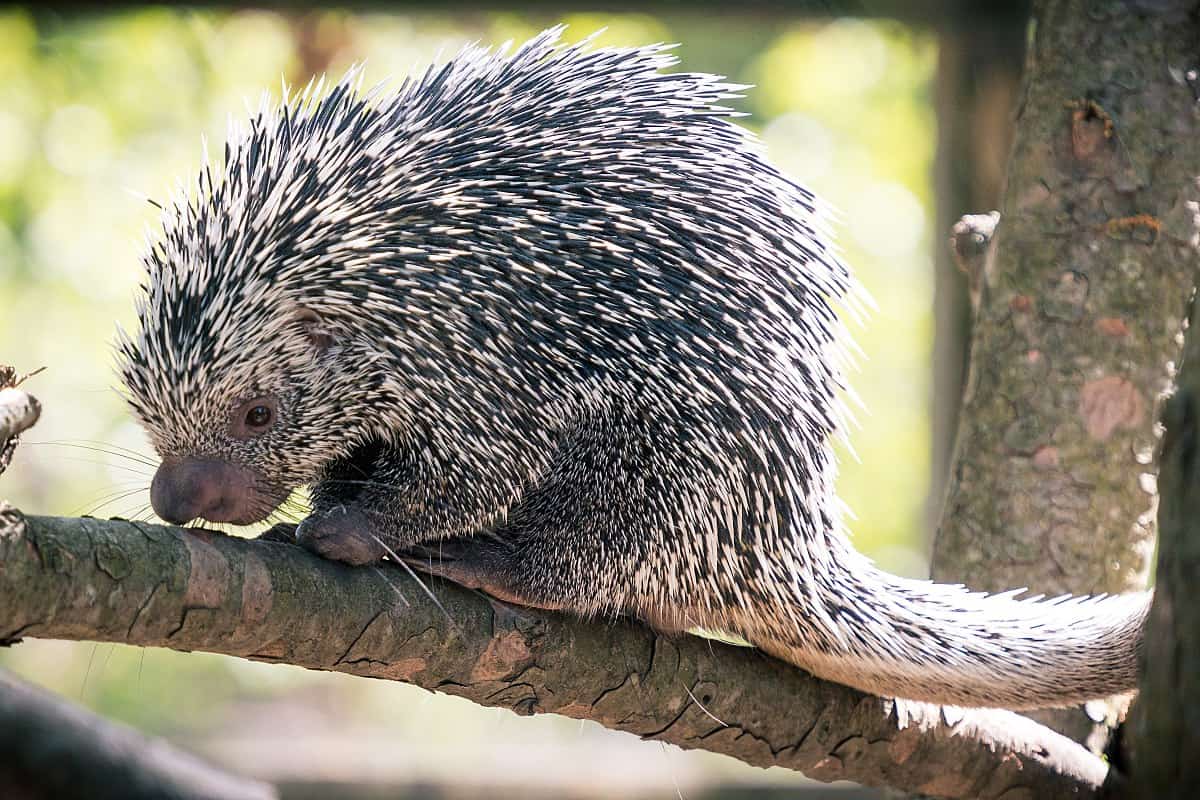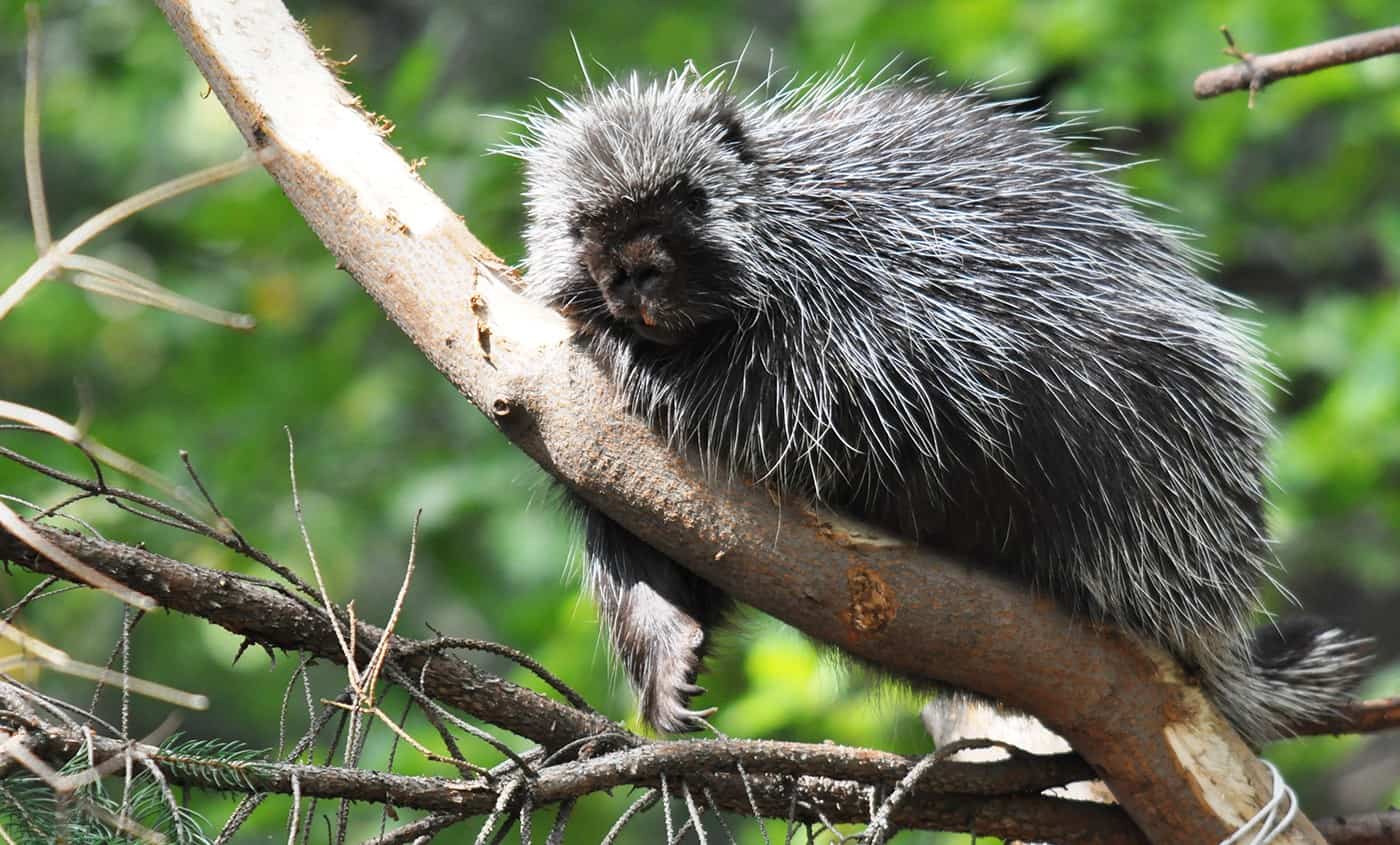fPorcupines are rodents, and the name porcupine comes from Middle French porc espin, meaning “spined pig.”
There are two families of porcupines: Old World and New World porcupines. The old world porcupines are found in Africa, Asia, and South Europe, while the new world porcupines are found in North, Central, and South America.
This article provides a detailed explanation of what porcupines eat and where they live, among other things:
Table of Contents
Facts About Porcupines
There are several interesting facts about porcupines. Here are some of them:
Habitat
Porcupines can be found in different locations depending on the species. For example, the North American porcupines live in coniferous and mixed forest habitats in Canada, Northern Mexico, and the North Eastern United States.
These animals are nocturnal and spend most of their time on trees. However, they will come down to the ground to look for food or during the winter season when there is little foliage on trees.
The Old World porcupines live in terrestrial regions such as deserts, hillsides, and woodlands. Some of these porcupines are excellent swimmers and climbers and spend most of their time in trees.
Characteristics
Porcupines are medium to large-sized animals. They have a round body with short legs and a long tail. The Old World porcupines are larger than the New World porcupines, with some weighing up to 77 pounds, while the North American porcupine is smaller, weighing between 12-35 pounds.
Porcupines have black or dark brown fur. The quills on their backs are stiff and sharp, and they use them for self-defense and to deter predators.
Reproduction
Porcupines are generally solitary animals. The male and female come together only during the breeding season between mid-summer and early fall to mate.
The gestation period for porcupines is about seven months, giving birth to one or two offspring at a time. The young ones are born with soft quills that harden after a few days.
The mother takes care of the young for about 18 months until they are ready to fend for themselves.
The Old World Porcupines VS. The New World Porcupines
In several ways, the old world porcupines(Family Hystricidae) are different from the new world porcupines(Family Erethizontidae). We discuss how the two porcupines differ below.
Old World Porcupines

There are 11 species of old-world porcupines that are classified into eight genera. These porcupines are found in Africa, Asia, and Southern Europe.
The Old World porcupines have longer and thinner quills than the new world porcupines. The quills on their backs are used for self-defense and to deter predators. These porcupines are generally larger than the new world porcupines, with some weighing up to 77 pounds.
New World Porcupines

There are 18 new world porcupines species classified into three genera. These porcupines are found in North America, Central, and South America.
The New World porcupines have shorter and thicker quills than the old world porcupines. The quills on their backs are also used for self-defense and to deter predators.
These porcupines are generally smaller than in the old world, with some weighing up to 35 pounds.
What Do Porcupines Eat?
Porcupines are herbivorous animals, and their diet consists of plants, fruits, and vegetables. They use their sharp incisors to bite off pieces of bark from trees. They also eat the leaves, stems, and roots of plants.
In the wild, porcupines eat just about anything they can find, including insects, rodents, and small reptiles. However, in captivity, their diet is much more regulated and consists mainly of plants and vegetables.
But while the diet of porcupines is general and may seem the same all through, they vary depending on the season and the types of porcupines. Here is a breakdown of what different porcupines eat:
- North American Porcupines
The North American porcupine is a herbivorous animal, and its diet consists of plants, fruits, and vegetables such as apples, bananas, sweet potatoes, and carrots. They also eat the leaves, stems, and roots of plants.
- Brazilian Porcupines
The Brazilian porcupine is omnivorous and will eat both plants and animals. Their diet consists of fruits, vegetables, insects, rodents, and small reptiles. They are expert climbers, which comes in handy when looking for food, allowing them to feed on a wide range of plants and small animals.
- African Brush-tailed Porcupines
The brush-tailed porcupines are one of the largest in Africa and can weigh up to 77 pounds. They are nocturnal animals and spend most of their time on trees. The African brush tail porcupine is a herbivorous animal whose diet consists of plants, fruits, and vegetables. They are also known to feed on animal carcasses.
- Asiatic Brush-tailed Porcupines
These porcupines are fairly small compared to other old-world porcupines but larger than the new world porcupines. They are primarily herbivorous and feed on fruits, grubs, and bamboo shoots. However, they can also feed on insects and scavenge on bones and hones.
- Sumatran Porcupines
These porcupines occupy the Surmattan region, which is the island of Sumatra. They are the largest porcupines in Asia and can weigh up to 60 pounds. The Sumatran porcupine is a herbivorous animal, and its diet consists of plants, sugarcane, melons, and bean. However, they will also eat insects, and other animal remains to get sodium and potassium.
- South African Porcupines
The South-African porcupines, or the Cape porcupines, are the largest of all the porcupines. They can weigh up to 110 pounds, and their quills can be up to 13 inches long. The South-African porcupine is a herbivorous animal, and its diet consists of plants, fruits, roots, bulbs, and vegetables. However, they will also eat carrions.
- Mexican Dwarf Hairy Porcupines
The Mexican dwarf hairy porcupine is one of the smallest species of porcupines. They weigh between two to four pounds and are found in Mexico, Central America, and South America. The Mexican dwarf hairy porcupine is a herbivorous animal, and its diet consists of sweet potatoes, tree leaves, carrots, and bulbs.
- Bristle-spined Porcupines
The bristle-spined porcupine is found in Central and South America. They are nocturnal animals and spend most of their time on trees. The bristle-spined porcupine is a herbivorous animal, and its diet consists of plants, fruits, vegetables, peanuts, and insects. However, their favorite diet is cocoa nuts, and they prefer to live in areas close to cocoa plantations.
- Thick-spined Porcupines
The thick-spined porcupine is found in Africa and Indo-Malayan Asia. They are nocturnal animals and spend most of their time on trees. The thick-spined porcupine is a herbivorous animal, and its diet consists of plants, fruits, vegetables, and insects. However, they are not good climbers and prefer to eat fallen fruits.
Porcupines’ Diet During Seasons
Porcupines are mostly herbivorous animals, but there are some exceptions. Depending on the season, porcupines will change their diet to include more fruits and vegetables or meat.
In the winter, porcupines will eat more bark and twigs because they are looking for food that is high in calories. In the summer, porcupines will eat more fruits and vegetables because they are looking for food that is high in water content.
What Animals Kills Porcupines?

Other animals do not often kill porcupines, but there are some exceptions. This is because the quills on a porcupine can be up to 13 inches long and are very sharp, forming one of the best defenses in any animal.
One of the most common predators of porcupines is the African leopard. Other predators include the cheetah, lions, and hyenas. There have also been spotting of quills on foxes, wolves, wolverines, bobcats, fishers, lynxes, coyotes, owls, and even dogs.
Humans also kill porcupines for their meat and quills. Porcupine meat is considered a delicacy in some cultures, and the quills are used to make porcupine quill art.
Are Porcupines Good For Anything?
Porcupines have many benefits. They are a food source for many animals and provide nutrition to the animals that feed on them. Additionally, they have quills that are used to make porcupine quill art. Porcupines are also known to eat the ticks off of other animals, which helps to control the spread of Lyme disease.
Moreover, porcupines can help the forest ecosystem by eating the bark of trees. This helps to control the growth of trees and prevents forest fires. They also help in pruning trees which allows new growth. The best part is that they aren’t as problematic as other wild animals and aren’t predators.
Final Words
Porcupines are often misunderstood as dangerous because of their quills. However, they are gentle animals that mostly keep to themselves. They are interesting creatures with a surprising diet and many benefits to the ecosystem. They eat leaves, small insects, fruits, and vegetables depending on the season.








































